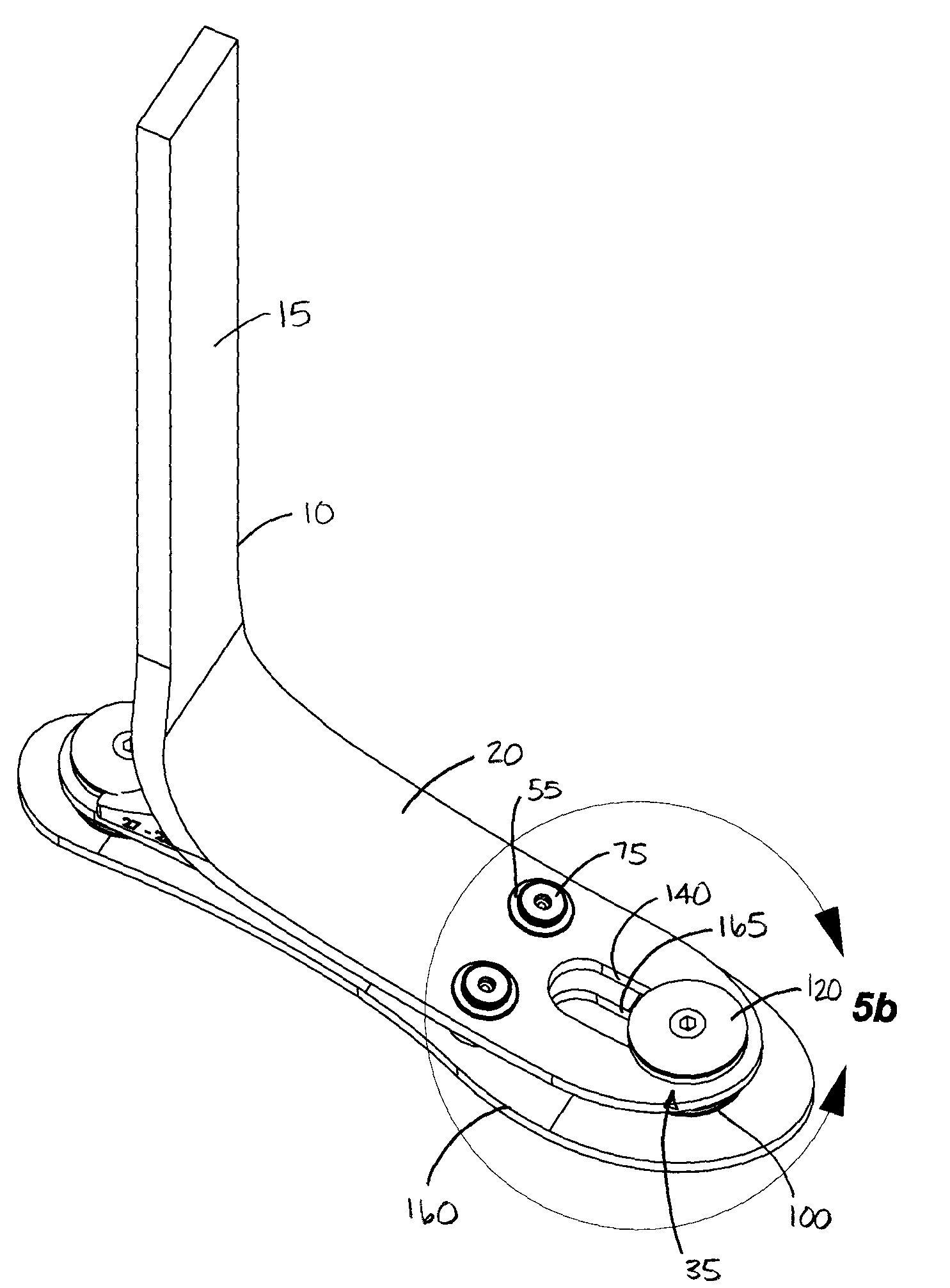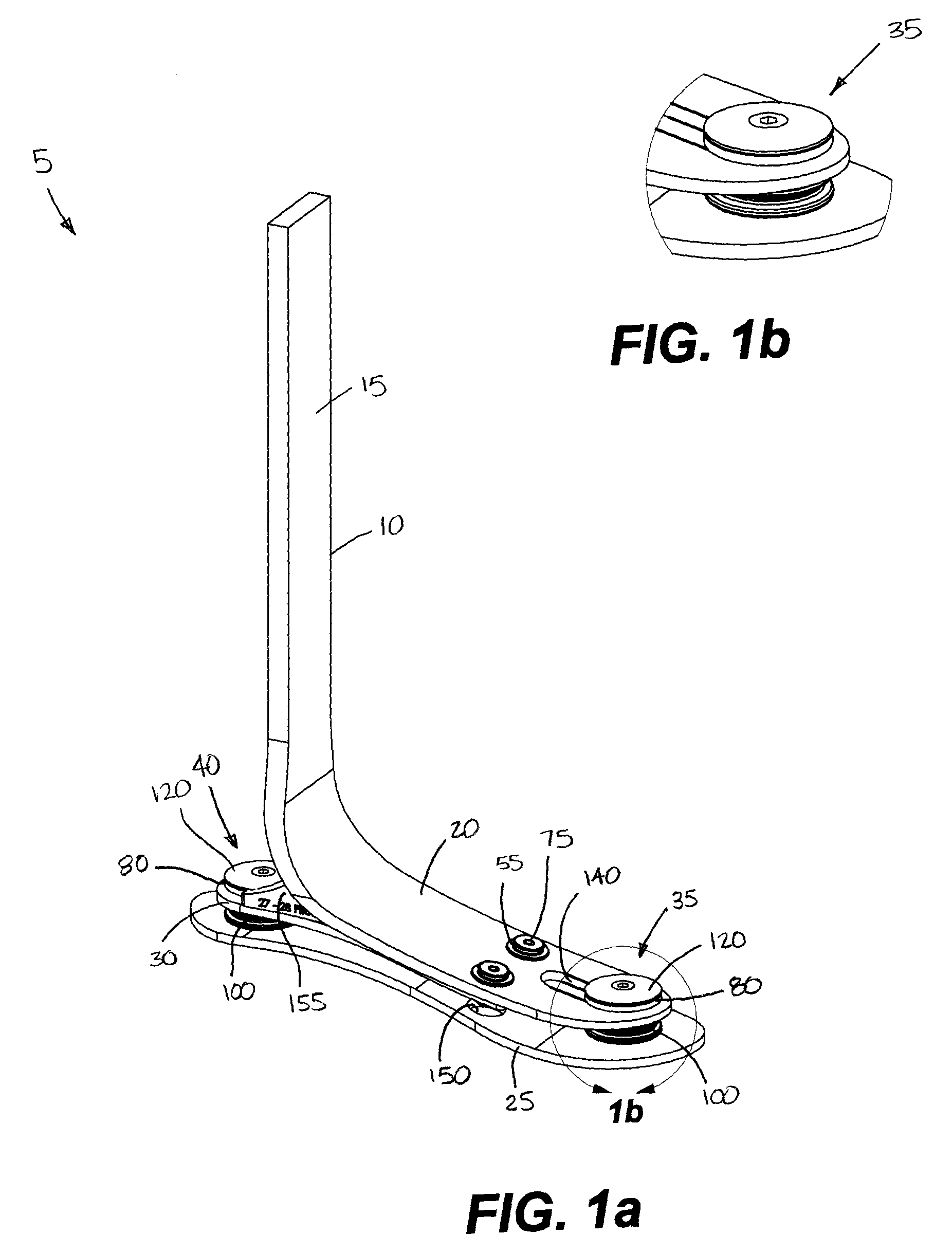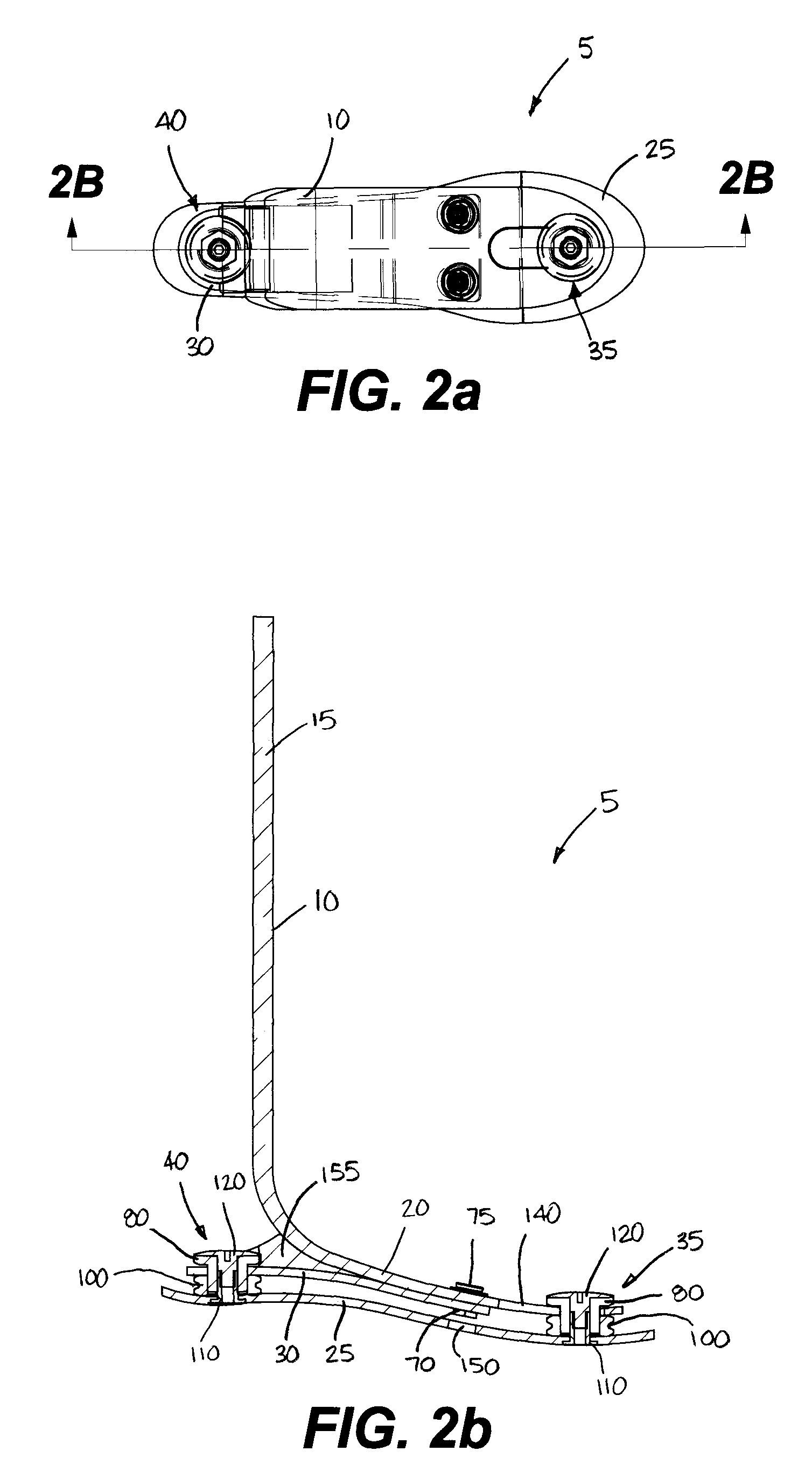Prosthetic foot
a prosthetic foot and foot technology, applied in the field of shock absorption prosthetic feet, can solve the problems of known energy-transferring designs, bulkiness, complexity, heavy weight, etc., and achieve the effects of promoting good energy-transferring, different mechanical properties, and imparting shock-absorbing flexibility characteristics
- Summary
- Abstract
- Description
- Claims
- Application Information
AI Technical Summary
Benefits of technology
Problems solved by technology
Method used
Image
Examples
Embodiment Construction
)
[0031]One exemplary embodiment of a prosthetic foot 5 of the present invention is illustrated in FIGS. 1-3. As shown, the prosthetic foot 5 includes a shank 10, a foot plate 25, and an intermediary heel plate 30. The shank 10 is shown to have an elongated and substantially vertical portion 15 that graduates into a slightly curved foot portion 20. The shank 10 is shaped to control spring rate, so as to accommodate amputees of different weights and activity levels, and also offers dynamic input at both heel strike and toe off. Depending on the materials selected for its manufacturing, the shank 10 may also permit some degree of inversion / eversion movements through twisting in the short direction. The height of the vertical section 15 may be adjusted as needed to accommodate amputees requiring different prosthetic limb lengths.
[0032]The foot plate 25 acts as a base that allows an amputee to maintain balance and stability. Preferably, the foot plate 25 is designed to have some degree o...
PUM
 Login to View More
Login to View More Abstract
Description
Claims
Application Information
 Login to View More
Login to View More - R&D
- Intellectual Property
- Life Sciences
- Materials
- Tech Scout
- Unparalleled Data Quality
- Higher Quality Content
- 60% Fewer Hallucinations
Browse by: Latest US Patents, China's latest patents, Technical Efficacy Thesaurus, Application Domain, Technology Topic, Popular Technical Reports.
© 2025 PatSnap. All rights reserved.Legal|Privacy policy|Modern Slavery Act Transparency Statement|Sitemap|About US| Contact US: help@patsnap.com



